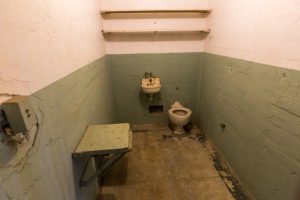We don’t tend to think of prisons as something which needs to be sustainable when we think of them at all. But the fact is that prisons do have an environmental impact. Keeping a lot of people in one place uses water and energy, and can produce significant pollution. This is aside from environmental concerns inside the prisons (for example, lead piping in older facilities)
Prisons, therefore, have the same need to be made more sustainable as other large facilities. Here are some specific concerns and the water and energy solutions that can meet these challenges.The right water and energy solutions have the power to address the environmental impact and sustainability challenges of prisons.
Energy Use
While things have definitely improved, the fact remains that prisons use a lot of energy. For example, the California Department of Corrections and Rehabilitation used about 5.5 billion kBtu in 2018; this was considerably lower than 2013, but could still be reduced. Many prisons still aren’t doing basic things like switching to energy efficient light bulbs and appliances. Prisons also use a lot of energy to heat and cool air.
Prisons also often use natural gas, especially for cooking and heating water. A study in 2010 showed that at that time the average prison spent $36,000 per month on energy.
Green prisons, thus, require things like solar and wind power, where relevant, upgrading lighting and appliances, and increased insulation. Reducing energy use also reduces the cost to the taxpayer.
Water Conservation
Like hotels and hospitals, prisons use a lot of water. Clothing and bedding have to be laundered, prisoners have to shower and there are water needs for cooking and drinking.
Many prisons have older toilets, which might even be porcelain. These can and should be replaced with modern low flow toilets and urinals. Needless to say, fixtures need to be carefully chosen so as to be suitable for secure areas. Moving from manual flush to electronic flush means one less thing which can be broken. Including advanced water controls can not only save water by minimizing waste via extended water use or un-needed flushes, but they also prove a useful tool to improve safety when utilized effectively by prison management.
Low flow showerheads can also be used, along with faucet restrictors, improved ice machines, etc. Laundry machines are a particular concern; replacing laundry machines with front load equivalents that use less water and energy can be tremendously helpful, as can industrial ozone laundry support systems.
In addition to saving money, reducing the prison’s water usage is better for the local environment, especially in areas which might be prone to drought. It also makes the plumbing more reliable.
Lighting
Likewise, lighting has a significant impact on a space’s functionality and environmental impact, and there are many benefits to upgrading an outdated lighting system.
Firstly, the integration of energy-efficient lighting can reap significant improvements to a prison’s energy output. Consider the amount of lighting fixtures throughout a correctional facility, from offices to living quarters. Replacing existing light sources with LED is key, as LEDs use 75% less energy and last 25 times longer than most legacy light sources. Meanwhile, occupancy sensors can ensure that no lights are being needlessly left on to drain resources.
Lighting is also a key factor when it comes to the safety of a prison’s staff and occupants. Improved lighting allows for better visual acuity, empowering staff to have better awareness and provide optimal security. In addition, the long-life of LED means fewer repairs will be required, decreasing the exposure risk to staff.
Pollution
Overcrowded prisons increase pollution in the immediate surroundings of the jail, and in the jail itself. There have been incidents of unsafe drinking water and of air and water pollution coming from prisons that exceed EPA requirements. Poor air quality in some prisons results in many incarcerated people having to take allergy medicine to stay functional. Prisons, often located in lower income areas, don’t always have facilities to monitor soil, water, and air quality.
The largest issue also comes back to water. It’s fairly common for water in prisons to be visibly contaminated. This water then leaves the prison in an even worse state and affects the entire area. Protecting incarcerated people from water contamination is basic justice, and requires upgrades at treatment plants and also the use of filtration to ensure that low quality water contaminated with, for example, arsenic, is improved before it is drunk by residents (or, for that matter, staff). As already mentioned, many prisons have lead pipes.
The aged plumbing is a major concern here, with many prison buildings being over a hundred years old. Upgrading and improving plumbing supports the sustainability of prisons and upgrading outgoing water treatment helps protect the immediate area. On top of that, using recyclable materials in building renovations and being careful to support sustainability in both new designs and renovations (New prisons can be made to meet LEED requirements) can also help with this difficult issue.
Prisons are generally not sustainable. They are older buildings that often use too much energy and water and both contain and expel pollutants. Envocore has a track record for helping prisons and other facilities maximize their sustainability. We can help with water and energy solutions, including smart utility metering, water conservation, and energy-conscious upgrades. Contact us to start your project today.

